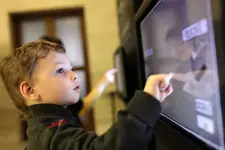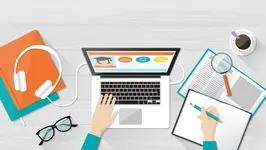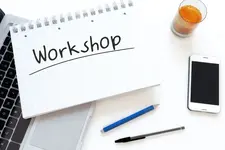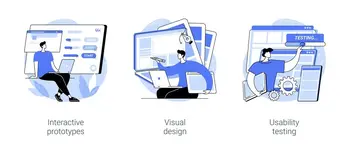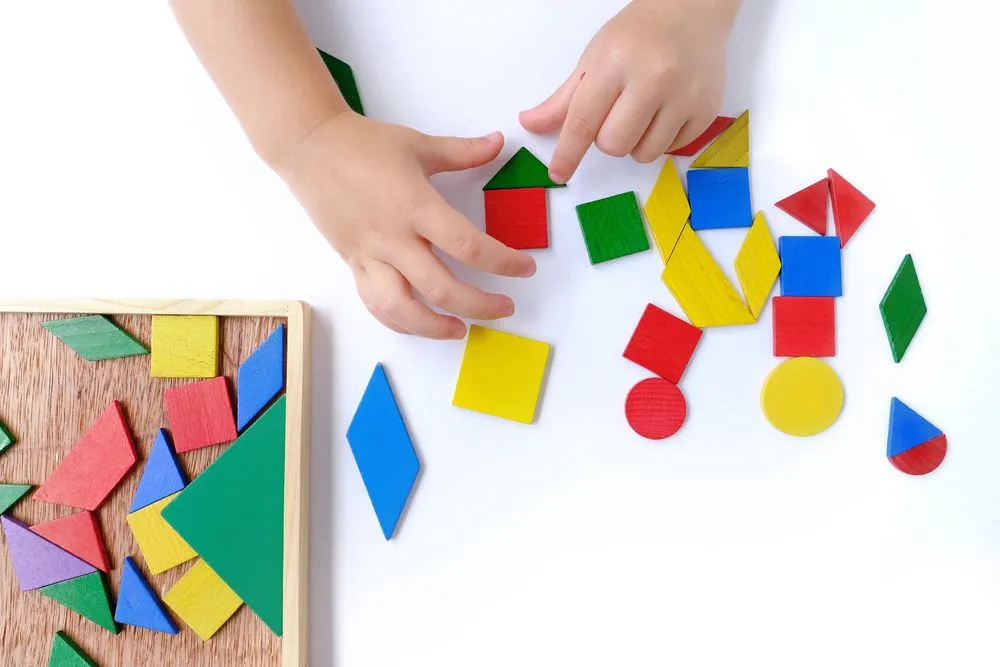
Table of contents
The way we teach is changing. Before, teachers just talked and students listened. But now, we can use technology to make learning fun and cool.
One way to make learning fun is to use interactive content. This is content that lets students do things with it. For example, you could use a quiz, a game, or a presentation that lets students answer questions, solve problems, or click on different things. Incorporating interactivity transforms static and dull learning making learning fun.
Interactive content is a great way to keep students interested. It makes learning more fun and cool, and it helps students to understand the material better. It is like taking interactive study tours with educational games.
There are lots of different platforms and resources that you can use to create interactive content. Some popular ones include
Genially,
Canva,
and
AhaSlides
.
If you want to make your lessons more engaging, I encourage you to try using interactive content. It’s a great way to make learning more fun and effective.
What is interactivity in learning?
Interactivity in learning is a great way to engage students and help them learn more effectively. Here are some of the benefits of interactivity in learning:
Active Participation: Students who participate actively in class discussions ask questions and share their thoughts and ideas thus taking an active role in shaping their own learning experience. They are not just listening to the teacher and taking notes; they are also contributing to the learning process by sharing their knowledge and insights. For example, they can participate in interactivity on how to make learning fun essays. This helps them to better understand the material and to develop their critical thinking skills.
Hands-on Activities: Learners get to touch, feel, and use real objects or materials. That’s the best way how to make learning fun at home. There can also be experiments where learners test out different ideas or solutions. Sometimes, hands-on activities involve simulations, which are computer models that mimic real-world situations. And sometimes, hands-on activities involve projects, where learners work together to create something new.
Collaboration: When learners work together in groups or pairs, they can solve problems, talk about ideas, share information, and share thoughts which makes a better academic atmosphere. Collaboration helps people work together, talk to each other, and understand the subject better.
Feedback and Assessment: Students get feedback on their work right away. This helps them think about what they understand and what they need to learn more about. They can then make changes to their learning strategies so they can do better next time.
Multimedia and Interactive Tools: Learners can use tools like videos, animations, quizzes, VR, AR, and online platforms to interact with learning materials.
Personalization: Students can learn in a way that is best for them. They can choose what they want to learn, how they want to learn it, and how fast they want to learn it. This is called personalization.
Problem-solving and Critical Thinking: Students learn to think carefully about information and solve problems. They are encouraged to think in new ways and make good choices. As they have fun learning, students can be writing down what they see.
Interactivity in learning makes learning more fun and interesting. It helps you learn better by letting you explore things on your own and figure things out for yourself. It also helps you learn more deeply by making you think about what you’re learning and how it relates to other things you know. And interactivity can help you develop essential skills like problem-solving, critical thinking, and collaboration.
How does interactivity help learners?

Interactivity is important because it makes learning more fun and engaging. It also helps learners understand concepts better and remember information longer. Here are some ways that interactivity helps learners:
Active Engagement
When learning is interactive, students don’t just sit and listen. They do things. They answer questions, solve problems, and create things especially where interactivity encourages painting and visually compelling experiments. This active learning helps students understand the material better, think critically, and remember what they learn.
Motivation and Interest
When learning is interactive, it’s more fun and interesting. Games, quizzes, simulations, and other interactive activities help people learn by making them think and explore. This makes learning more rewarding and helps people stay interested in the subject.
Personalized Learning
Interactivity lets you learn in a way that fits you. You can go through the content at your speed, choose what you want to learn about and get feedback right away. Interactive platforms and tools often change the difficulty level or content based on how well you’re doing, so you always get a learning experience that’s just right for you.
Active Learning Strategies
When learning is interactive, students do more than just listen to the teacher. They do things like work on hands-on activities, solve problems, work together, and think about what they’re learning. This helps students learn more actively, and it helps them develop skills like critical thinking and problem-solving. Interactive learning can also help students apply what they’re learning to real-world situations.
Collaboration and Social Learning
Interactivity helps people learn together. When people work together on activities, projects, or discussions, they can share ideas, learn from each other, and improve their communication skills. This helps them work better in groups in the real world.
Immediate Feedback and Assessment
Interactive learning lets you know how you’re doing right away. You can take quizzes, do assessments, and try out simulations, and you’ll get feedback right away. This helps you see where you need to improve and makes sure you understand the material. It also helps you learn how to assess your own work, so you can track your progress over time.
Enhanced Retention and Transfer of Knowledge When you learn by doing, you remember what you learn better. Interactive exercises, simulations, and real-life applications make learning more fun and help you understand concepts better. This helps you remember what you learn for a long time and use it in new situations.
Embrace Gamification

Gamification has become a popular way to make learning more engaging and successful for students. By incorporating interactive features and competition, educators can improve students’ motivation and enhance their learning experience.
1. Interactive Quizzes
Interactive quizzes bring a fun, competitive element to classroom activities. Teachers can create quizzes covering various subjects and use them as an educational tool to gauge students’ understanding of the material. With technology such as Genially, customizable quizzes can be made visually appealing and accessible on multiple devices, making it easy for students to participate and engage in the learning process.
2. Digital Scavenger Hunts
Digital scavenger hunts provide a creative way to challenge students and help them develop problem-solving, collaboration, and critical thinking skills. Teachers can design scavenger hunts using various online platforms, incorporating riddles, mind games, and clues related to the subject matter. Students can work individually or in teams, making it a versatile activity for both in-person and remote academic atmospheres.
3. Virtual Escape Rooms
Virtual escape rooms offer an immersive gaming experience that can be customized to fit any subject or learning objective. By working together to solve riddles and challenges, students can practice logical thinking, decision-making, and teamwork. Many online resources and tools can assist in creating virtual escape rooms, adapting them to different educational contexts, and enhancing students’ engagement with the material.
By incorporating gamification elements such as interactive quizzes, digital scavenger hunts, and virtual escape rooms, educators can transform traditional learning scenarios into more engaging and interactive experiences, ultimately saying goodbye to boring classes.
4. Multimedia Integration
The incorporation of multimedia in the classroom creates a more engaging experience for students. This section explores three essential types of multimedia: videos and animations, virtual interactive study tours, and audio clips.
5. Videos and Animations

Videos and animations are powerful tools for fostering a deeper understanding of complex concepts. They allow students to visualize abstract ideas in a more accessible way. For example, utilizing animated videos on YouTube to demonstrate scientific processes, historical events, or literary analysis can significantly improve students’ comprehension and retention. Additionally, creating fun and interactive lessons ensures students remain engaged in the learning process.
6. Virtual Field Trips
Virtual interactive study tours provide a unique opportunity for students to explore and experience new environments without leaving the classroom. These trips can include visits to museums, cultural landmarks, and even distant planets. Teachers can engage students using virtual reality technology or simple multimedia presentations. Virtual interactive study tours not only expand students’ horizons but also help them develop critical thinking skills in analyzing and understanding the connections between different subjects.
7. Audio Clips
Incorporating audio clips into the classroom enables students to practice active listening and develop their auditory skills. These clips can range from podcasts, speeches, or even sound effects related to the subject matter. Utilizing audio in conjunction with visual materials creates a multisensory learning environment where students can deepen their understanding of various topics. For instance, using audio recordings of historical speeches can give students insight into the emotions and context behind the words, thus enhancing their appreciation for history.
What are examples of interactive learning?
Interactive learning is when students learn by doing. There are lots of different ways to do this, like games, using online tools, or working in groups. Here are some examples:
i. Online Quizzes and Games:

Fun quizzes and games can help you learn by testing your knowledge, giving you instant answers, and making sure you understand the material. Websites like Kahoot!, Quizlet, and educational apps have lots of different quizzes and games to choose from.
ii. Virtual Reality (VR) and Augmented Reality (AR):

VR and AR technologies let you learn by pretending to be in a real place. You can visit historical landmarks, do experiments, or see 3D models of things. This helps you understand things better.
iii. Interactive Presentations and Multimedia:
Instead of just showing slides, students can make their presentations interactive using programs like Prezi or PowerPoint. Adding multimedia elements like videos, audio clips, and interactive graphics will keep students engaged and make them want to participate.
iv. Collaborative Online Platforms:
Online tools like Google Docs , Padlet , and Trello let students work together on projects in real time. They can share ideas and help each other out. These tools help kids learn how to collaborate, think critically, and communicate effectively.
v. Simulations and Virtual Labs:
Simulations and virtual labs let you learn by doing. You can conduct experiments and explore simulations in a safe and controlled environment. This is a great way to learn about subjects like physics, chemistry, or business management.
vi. Interactive Videos and Tutorials:
Educational videos with fun activities help students learn better. Websites like Edpuzzle let teachers add questions, quizzes, and notes to videos. This makes learning more fun and helps students learn faster.
vii. Gamified Learning Platforms:

Gamification makes learning fun by adding game elements like prizes, points, and levels. Websites like Classcraft and Duolingo use gamification to make learning more interesting and rewarding.
viii. Interactive eBooks and Digital Storytelling:

Books and websites that let you make choices in the story are called interactive eBooks and digital storytelling platforms. You can create your own stories, choose your own adventure, or make the story go in different ways. These activities help you be creative, think critically, and solve problems.
ix. Online Discussion Forums and Virtual Classrooms:
Students can talk to each other online in discussion groups or virtual classrooms. They can share their thoughts, ask questions, and learn from each other. These online places help kids work together, learn from each other, and get better at talking to people.
x. Personalized Adaptive Learning Platforms:
Adaptive learning platforms are like online teachers that change what they teach and how fast they teach it based on how well you learn. They use interactive exercises and quizzes to see how you’re doing, and then they give you more of the stuff you’re good at and less of the stuff you’re not so good at. This helps you learn faster and more efficiently.
Hands-On Learning

One way to make school more fun is to do hands-on activities. These activities help you learn better and understand the material more. In this section, we will learn about two types of hands-on activities: virtual labs and creative lessons.
(a) Virtual Labs
Virtual labs are a great way to learn about scientific experiments, math, and engineering. They let you do experiments and see the results right away. This helps you understand the concepts better.
In scientific Study, you can explore chemical reactions, manipulate DNA, or dissect virtual animals. In math, you can visualize geometric shapes and calculate measurements accurately. In engineering, you can design and test virtual prototypes before you build them for real.
Virtual labs are safe because you don’t have to use real chemicals or equipment. You can also practice your skills over and over again. This helps you learn from your mistakes and improve your understanding.
Here are some examples of virtual labs:
Science:
Chemistry: Thermite Reaction
Biology: Dissecting a Frog
Physics: Newton’s Laws of Motion
Mathematics:
Geometry: Building a 3D Cube
Algebra: Solving for x in a Linear Equation
Statistics: Calculating the Mean, Median, and Mode
Engineering:
Designing a Bridge: Build a bridge that can support a certain amount of weight.
Testing a Car Prototype: Test a car prototype to see how fast it can go and how well it handles.
(b) Creative Lessons

To make learning more fun, try adding creative lessons to your class. These lessons often use collaboration, innovation, and problem-solving skills to teach critical thinking and teamwork. Here are some examples of creative lessons:
Project-Based Learning: This type of learning lets students work together to solve real-world problems. They can work in small groups to research, plan, and execute a project.
Role-Playing and Simulations: These activities let students pretend to be someone else or be in a different situation. This can help them learn how to think like someone else and solve problems in new ways.
Design Thinking Challenges: These challenges ask students to come up with new and innovative solutions to problems. They can work together to brainstorm ideas, create prototypes, and test their solutions.
By using hands-on activities and creative lessons, teachers can make learning more interactive and engaging for students. This will help them stay interested in the material and learn more effectively.
Stories and Scenarios
1. Narrative Learning Modules
Narrative learning modules are stories that teach people about things. The stories have characters, places, and events that make the information easy to understand. This makes learning more fun and easier to remember.
For example, you could make a story about a company that has to follow workplace rules. Or, you could make a story about a historical event that teaches people a new skill.
These modules can be used in eLearning courses or virtual lessons. They make learning more interesting and fun. Storytelling techniques like dialogue, realistic scenarios, and plot twists can be used to keep people interested and involved in learning.
2. Case Studies
Case studies are real-world stories that show how something works. They can help you understand a topic better by showing you the successes, challenges, and lessons learned from real people. Case studies can also help you learn how to make decisions and solve problems.
Using case studies in your course can make learning more interesting and helpful. When you present a case study, be sure to include background information, the goals of the study, the methods used, the results, and an analysis. This will help learners understand the concepts being taught.
Encourage discussion among learners about the case study. This will help them analyze the case study and apply their knowledge to similar situations. This critical thinking approach can help learners learn more effectively and retain the material better.

